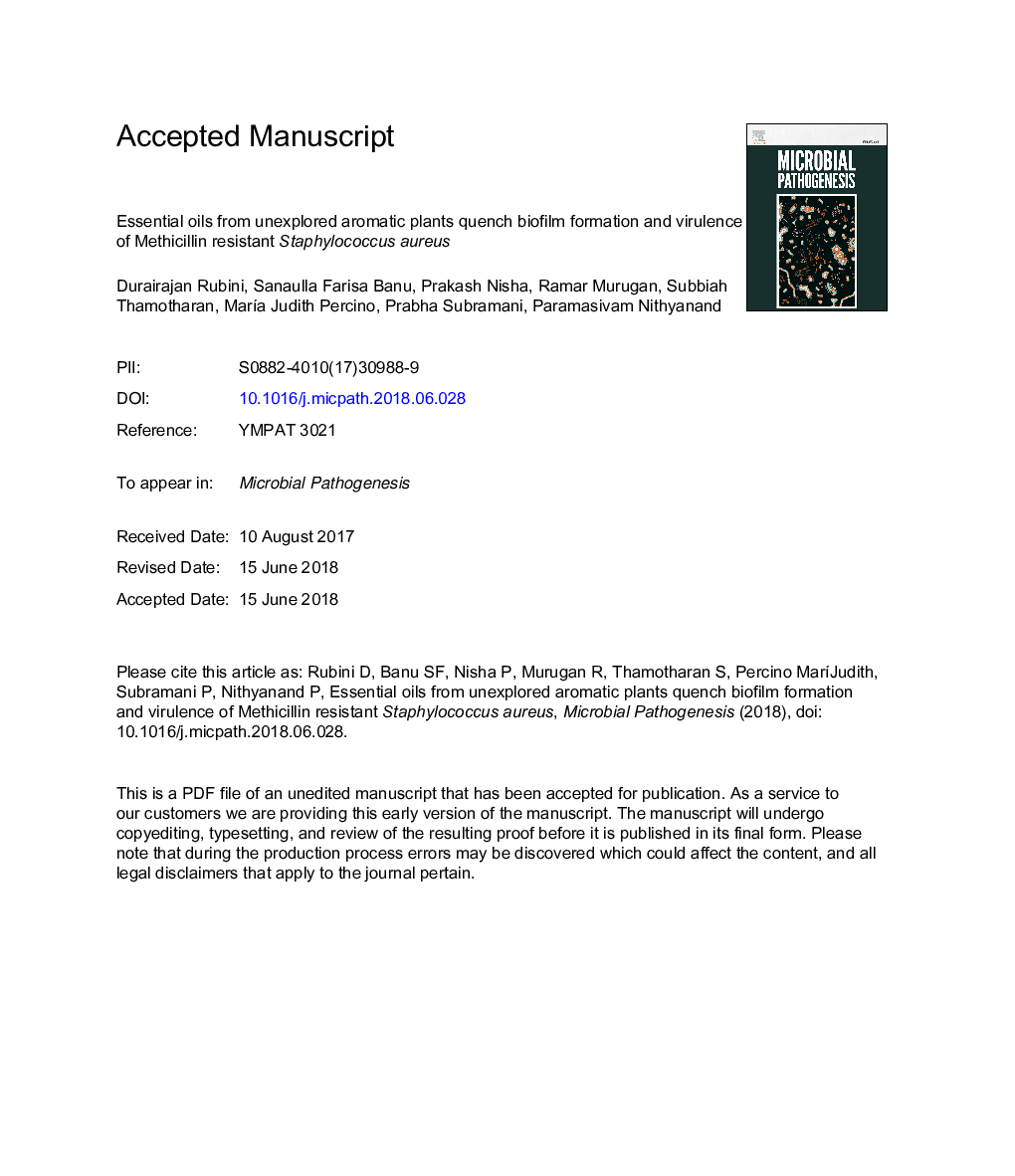| Article ID | Journal | Published Year | Pages | File Type |
|---|---|---|---|---|
| 8749306 | Microbial Pathogenesis | 2018 | 38 Pages |
Abstract
In the current study we have evaluated the antibiofilm and antivirulent properties of unexplored essential oils (EOs) obtained from Pogostemon heyneanus and Cinnamomum tamala against Methicillin Resistant Staphylococcus aureus (MRSA) strains. The EOs from both the aromatic plants was screened for their ability to prevent biofilm formation and to disrupt preformed biofilms. The efficacy of both the EOs to disrupt the preformed biofilms of various MRSA strains was determined by Confocal Laser Scanning Microscopy (CLSM) and Scanning Electron Microscopy (SEM).The EOs were further able to reduce the Extracellular polymeric substance (EPS) and slime synthesis the two factors of the biofilm assemblage. The EOs was also found to be effective in reducing virulence factors like staphyloxanthin and hemolysin. In silico docking studies were performed for the major components of essential oils and dehydroxysqualene synthase of MRSA which is responsible for the synthesis of staphyloxanthin. The results suggest that (E)-nerolidol showed better binding affinity towards the enzyme. Other compounds have similar binding strengths with the enzyme. Furthermore, the synergistic effect EOs along with the commercially available DNaseI and Marine Bacterial DNase (MBD) showed that the synergistic effect had enhanced biofilm disruption ability. The results show that EOs from P. heyneanus and C. tamala has potential antivirulent and biofilm inhibitory properties against clinical and drug resistant S. aureus strains. The present study highlights the importance of bioprospecting plant based natural products as an alternative for antibiotics owing to the emergence of multi-drug resistant strains.
Keywords
Related Topics
Life Sciences
Immunology and Microbiology
Microbiology
Authors
Durairajan Rubini, Sanaulla Farisa Banu, Prakash Nisha, Ramar Murugan, Subbiah Thamotharan, MarÃa Judith Percino, Prabha Subramani, Paramasivam Nithyanand,
